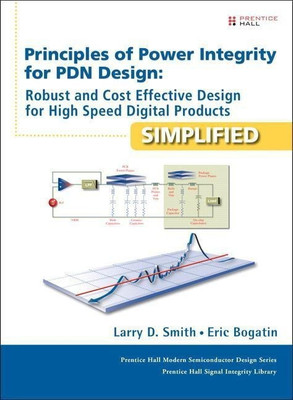Principles of Power Integrity for PDN Design--Simplified(English, Hardcover, Smith Larry)
Quick Overview
Product Price Comparison
It's not easy to engineer power delivery networks (PDNs) that work all the time, at the lowest cost. Now, Larry Smith and Eric Bogatin empower engineers with the principles, techniques, processes and understanding they need to consistently meet this challenge. Smith and Bogatin bring together everything you need to make your own good decisions about PDN design, and choose sensible tradeoffs related to performance, risk and cost. This guide's authors are the industry's leading experts in signal integrity and PDN. Smith has over 30 years' experience in electronics, system and PDN design at IBM, Sun Microsystems and Altera Corporation, and has architected today's most popular systematic approach to PDN design. Bogatin also has more than 30 years' experience in signal integrity, and has written the field's most popular SI text book, Signal and Power Integrity-Simplified. Here, they thoroughly illuminate the core principles at the foundation of PDN performance, including impedance, resonance, inductance, and signal propagation. They offer practical insights for understanding noise sources, and show how design features affect noise. Next, they help you strengthen your intuition about how physical design decisions affect electrical performance, and complement your intuition with detailed analysis to carefully balance cost and robustness. You'll find valuable rules of thumb, analytical approximations, examples of numerical simulations, and practical coverage of all PDN elements, from chip features to package, board, and voltage regulator module (VRM). The authors show to use measurement to anchor your designs to reality, characterizing components in the frequency domain, and characterizing systems in the time domain. They review the principles behind each measurement technique, as present multiple examples of measured performance of real world components and systems. Too often, PDN designs work inconsistently; or the techniques that work in some scenarios fail in others. This book won't just help you understand why: it will teach you a practical process for getting your PDN designs right in any new product.


